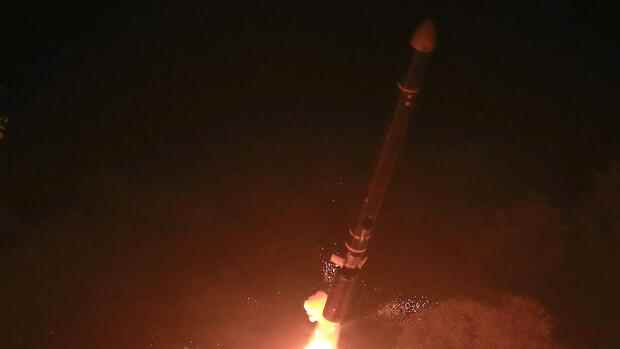The conflict on the Korean peninsula continues to escalate.
(Photo: dpa)
Tokyo North Korean leader Kim Jong Un has further escalated the situation on the Korean peninsula. According to the South Korean Defense Ministry, the North Korean military fired about 170 artillery shells in two buffer zones between the two countries in the Yellow Sea to the west of the peninsula and the Sea of Japan to the east.
According to South Korea, North Korea violated a bilateral agreement from 2018, with which both sides wanted to ease the situation after a nuclear test by the North in 2017 and the subsequent Korean crisis. In it, both sides had agreed to refrain from such provocations near the border. Among other things, the South Korean side hoped to reduce the risk of an accidental military conflict along the heavily armed border.
That hope is now finally history.
Instead, the conflict in Korea, which has been going on for decades, continues to escalate. Western experts are already warning that North Korea could conduct a seventh nuclear test at any time. One possibility is the use of tactical nuclear weapons, which could be used on the battlefield against South Korea. The latest escalation began last year with North Korea’s resumption of missile tests, in violation of the United Nations’ (UN) test ban. The situation worsened on October 4 when North Korea fired a missile over Japan for the first time in five years.
South Korea’s allies respond with military maneuvers
The US and its allies South Korea and Japan responded with military maneuvers. The USA moved its aircraft carrier USS Ronald Reagan back to the Sea of Japan and thus near the east coast of both Korean states. In addition, the United States, which is part of the international protection contingent in South Korea, conducted its own missile tests with the Allies. The North responded with its own manoeuvres. Among them this week was the sample of two long-range cruise missiles that North Korea says can carry nuclear warheads. During the night from Thursday to Friday, the military also flew fighter jets along the border, which South Korea countered with the launch of F-35 jets.
Top jobs of the day
Find the best jobs now and
be notified by email.
North Korea also shot down another short-range missile. According to the North Korean news agency KCNA, the military responded to a ten-hour target practice by the south on Thursday. The artillery fire should also be part of the countermeasures. It is still unclear how the situation will develop. South Korea’s National Security Council condemned the actions. In addition, the government imposed sanctions on 15 North Koreans and 16 institutions involved in Kim’s missile program.
Beware of nuclear armament
More worrying for the future of the region, however, is an increasing number of articles in the South Korean media about the re-deployment of tactical nuclear weapons by the US or even a nuclear build-up of its own. Robert Kelly, a political scientist at South Korea’s Busan National University, warns, “I think we’re reaching a tipping point in the debate about South Korea’s nuclear armament.” In the 14 years he’s been teaching international relations in South Korea, the discussion has never so fermented by the public as it is now.
The government fueled the discussion this week. “If North Korea goes ahead with a seventh nuclear test, we will face a whole new threat,” the South Korean newspaper Chosun Ilbo quoted a government official as saying. “We are discussing options with the United States to radically strengthen the United States’ expanded deterrence in order to do justice to the changed security situation on the Korean peninsula.”
More: North Korea fires missiles again after naval maneuvers by South Korea and the USA
